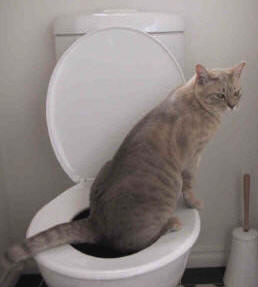Why Flushing Cat Poop Down Your Toilet Can Cause Problems - Tips for Safe Disposal
Why Flushing Cat Poop Down Your Toilet Can Cause Problems - Tips for Safe Disposal
Blog Article
Do you find yourself in search of critical information about Can You Flush Cat Poop Down The Toilet??

Intro
As cat proprietors, it's vital to be mindful of exactly how we dispose of our feline close friends' waste. While it might seem hassle-free to flush pet cat poop down the toilet, this practice can have destructive repercussions for both the setting and human health and wellness.
Ecological Impact
Flushing pet cat poop presents dangerous pathogens and bloodsuckers into the water, posing a considerable risk to aquatic ecological communities. These contaminants can negatively impact aquatic life and compromise water top quality.
Health and wellness Risks
In addition to ecological issues, purging feline waste can additionally position health dangers to human beings. Feline feces may include Toxoplasma gondii, a parasite that can trigger toxoplasmosis-- a potentially serious disease, especially for expecting ladies and individuals with weakened body immune systems.
Alternatives to Flushing
Fortunately, there are more secure and extra liable methods to throw away feline poop. Consider the following choices:
1. Scoop and Dispose in Trash
The most common approach of disposing of pet cat poop is to scoop it into a biodegradable bag and toss it in the trash. Make certain to utilize a devoted litter inside story and deal with the waste without delay.
2. Use Biodegradable Litter
Go with biodegradable pet cat litter made from materials such as corn or wheat. These clutters are environmentally friendly and can be securely disposed of in the trash.
3. Hide in the Yard
If you have a yard, think about hiding pet cat waste in a marked location far from veggie yards and water resources. Be sure to dig deep adequate to stop contamination of groundwater.
4. Mount a Pet Waste Disposal System
Purchase a pet waste disposal system particularly designed for cat waste. These systems utilize enzymes to break down the waste, minimizing smell and ecological impact.
Conclusion
Liable family pet ownership prolongs past giving food and sanctuary-- it also involves proper waste administration. By avoiding purging cat poop down the bathroom and going with alternate disposal techniques, we can lessen our ecological impact and secure human health and wellness.
Why Can’t I Flush Cat Poop?
It Spreads a Parasite
Cats are frequently infected with a parasite called toxoplasma gondii. The parasite causes an infection called toxoplasmosis. It is usually harmless to cats. The parasite only uses cat poop as a host for its eggs. Otherwise, the cat’s immune system usually keeps the infection at low enough levels to maintain its own health. But it does not stop the develop of eggs. These eggs are tiny and surprisingly tough. They may survive for a year before they begin to grow. But that’s the problem.
Our wastewater system is not designed to deal with toxoplasmosis eggs. Instead, most eggs will flush from your toilet into sewers and wastewater management plants. After the sewage is treated for many other harmful things in it, it is typically released into local rivers, lakes, or oceans. Here, the toxoplasmosis eggs can find new hosts, including starfish, crabs, otters, and many other wildlife. For many, this is a significant risk to their health. Toxoplasmosis can also end up infecting water sources that are important for agriculture, which means our deer, pigs, and sheep can get infected too.
Is There Risk to Humans?
There can be a risk to human life from flushing cat poop down the toilet. If you do so, the parasites from your cat’s poop can end up in shellfish, game animals, or livestock. If this meat is then served raw or undercooked, the people who eat it can get sick.
In fact, according to the CDC, 40 million people in the United States are infected with toxoplasma gondii. They get it from exposure to infected seafood, or from some kind of cat poop contamination, like drinking from a stream that is contaminated or touching anything that has come into contact with cat poop. That includes just cleaning a cat litter box.
Most people who get infected with these parasites will not develop any symptoms. However, for pregnant women or for those with compromised immune systems, the parasite can cause severe health problems.
How to Handle Cat Poop
The best way to handle cat poop is actually to clean the box more often. The eggs that the parasite sheds will not become active until one to five days after the cat poops. That means that if you clean daily, you’re much less likely to come into direct contact with infectious eggs.
That said, always dispose of cat poop in the garbage and not down the toilet. Wash your hands before and after you clean the litter box, and bring the bag of poop right outside to your garbage bins.
https://trenchlesssolutionsusa.com/why-cant-i-flush-cat-poop/

Do you enjoy more info about How to Dispose of Cat Poop and Litter Without Plastic Bags? Make feedback further down. We'd be interested to know your thinking about this posting. We hope to see you back again soon. Those who liked our blog posting plz don't forget to share it. I appreciate reading our article about Don’t flush cat feces down the toilet.
Schedule Today! Report this page